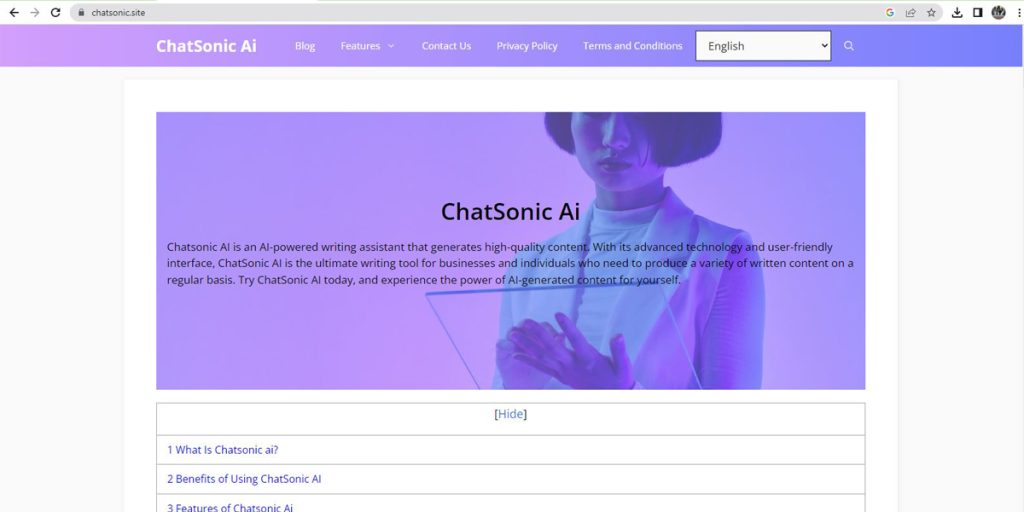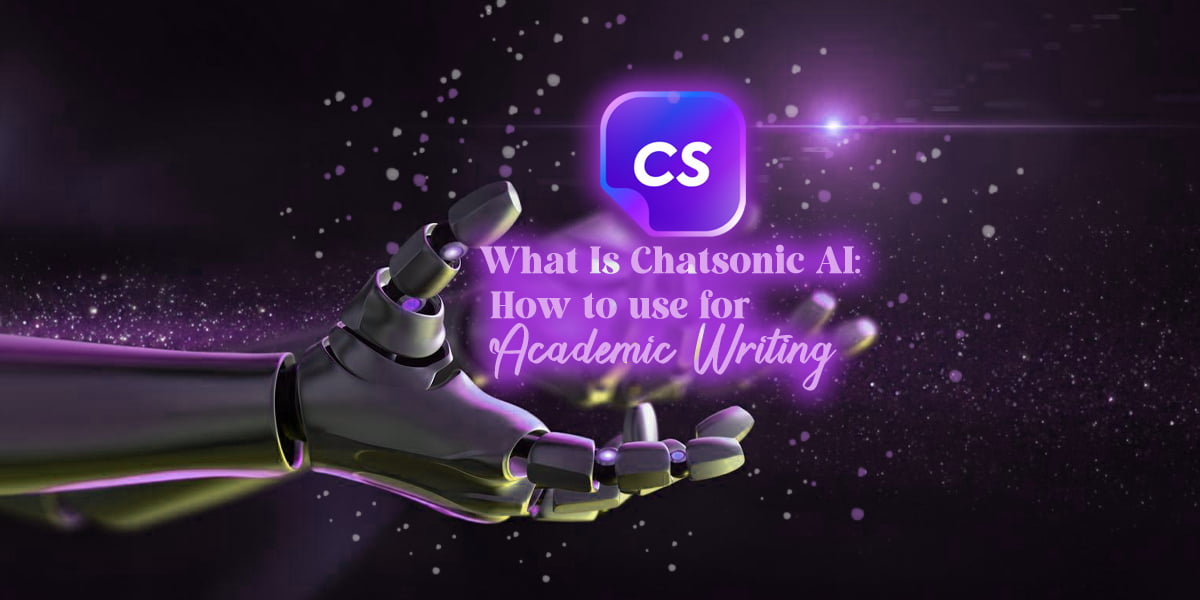Chatsonic AI is an advanced language model designed to assist users in generating high-quality written content quickly and easily. This cutting-edge technology utilizes natural language processing (NLP) algorithms to understand user inputs and produce contextually relevant output. It is beneficial for academic writing as it can help students and researchers craft well-structured and grammatically correct essays, research papers, and dissertations. That improves the quality of their written work, which is essential for achieving academic success. It gives an overview of Chatsonic AI’s features, highlights its importance for academic writing, and offers tips on how to use it effectively.
What is Chatsonic AI?
Chatsonic AI is a state-of-the-art language model for artificial intelligence (AI) and natural language processing (NLP) to assist users in generating high-quality written content. This cutting-edge technology is designed to understand user inputs and produce contextually relevant, grammatically correct, well-structured, coherent output. It has several advanced features, such as automatic grammar correction, sentence rephrasing, and contextual word suggestions, which help users improve the quality of their writing quickly and efficiently. Compared to other AI writing tools, it stands out due to its ability to generate content that is never correct but contextually appropriate and well-structured. It is user-friendly, making it easy for users to navigate and utilize its features effectively.
How It Works
Chatsonic AI is a sophisticated language model that utilizes artificial intelligence (AI) to generate high-quality written content. AI is an umbrella that refers to the simulation of human intelligence in machines. It uses machine learning algorithms, which enable the system to learn from data and improve performance over time. Through machine learning, it can analyze large volumes of text data, identify patterns, and use this information to generate contextually relevant output. It utilizes natural language processing (NLP), an AI that interacts with computers and human language. NLP allows Chatsonic AI to understand the meaning behind user inputs, analyze the structure of sentences, and generate grammatically correct and coherent content. Combining AI, machine learning, and NLP makes it a powerful tool for generating high-quality written content.
How to Use Chatsonic AI for Academic Writing
Using Chatsonic AI for academic writing is a straightforward process.
1. Sign up for a Chatsonic AI account.
2. Select the academic writing task you want to work on, such as an essay or research paper.
3. Input the topic or subject of your academic writing task.
4. Provide relevant information or instructions to guide AI in generating content.
5. Choose the desired level of language proficiency, style, and tone of your writing.
6. Click the “Generate” button to let AI generate the initial draft.
7. Review and edit the generated content to ensure it meets requirements and expectations.
8. Repeat steps 6 and 7 until you are satisfied with the final output.
It can assist with different types of academic writing work. It can help generate contextually relevant content, make grammatical corrections, and ensure the document’s structure is well-organized. Using AI for academic writing can save time and enhance the quality of your writing.
Pros and Cons of Using Chatsonic AI for Academic Writing
Pros:
- Increased efficiency: It can assist with generating content quickly, which saves time for students and researchers.
- Improved accuracy: It can analyze the structure of sentences and ensure that the grammar and punctuation are correct, resulting in well-written and readable content.
- Consistency: It can ensure that the writing style and tone are consistent throughout the document.
- Assistance with writer’s block: It can help users get started with their writing by generating initial drafts, which can be edited and refined.
Cons:
- Potential issues with originality: It may generate content that is too similar to existing content, leading to problems with plagiarism and academic integrity.
- Limited creativity: It may not be able to generate content that is as creative or original as human-generated content.
- Overreliance on technology: Students and researchers may become too dependent on Chatsonic AI, leading to a lack of critical thinking and independent research skills.
- Cost: It may come at a financial cost to be feasible for all students and researchers.

Features of Chatsonic AI
It is an advanced language model that offers several features designed to assist users in generating high-quality written content.
Text Editing and Revision: It can assist with text editing and revision by analyzing the structure of sentences, correcting grammar and punctuation errors, and suggesting alternative words and phrases to improve the flow and coherence of the text. It can also provide feedback on the readability and complexity of the content.
Plagiarism Checking: It can check for plagiarism by comparing the generated content with existing sources and identifying any potential instances of copied or paraphrased content. This feature helps users ensure their original content meets academic integrity standards.
Citation and Reference Management: It can assist with citation and reference management by generating accurate and consistent sources in different citation styles, such as APA, MLA, and Chicago. This feature helps users save time and avoid errors in the citation process.
Summarization and Paraphrasing: It can assist with summarizing and paraphrasing by analyzing the content and generating a condensed version that captures the main points. This feature helps users reduce the text’s length while maintaining the key information. Read about to Improve Literacy Rates in Developing Countries.
Limitations and Challenges of Chatsonic AI
Chatsonic AI is an advanced language model that provides users with several benefits for academic writing. However, there are also limitations and challenges associated with its use. Here are some of the fundamental rules and challenges of AI:
Technical Issues: It is a complex software program that relies on machine learning algorithms, and as such, it can experience technical issues that may impact its performance. Users may encounter bugs, glitches, or crashes, disrupting the writing process.
Limited Contextual Understanding: It may need help understanding the context and nuance of specific topics, leading to errors or inaccuracies in generated content. This limitation may be more pronounced in specialized fields with technical jargon or complex terminology.
Overdependence on Technology: It may lead to overdependence on technology, impacting critical thinking and independent research skills. Users may become reliant on Chatsonic AI for generating content and need to catch up on the importance of developing their writing skills.
Ethical Concerns: Ethical concerns are associated with using this, particularly about plagiarism and academic integrity. It may generate content that is different from existing sources, leading to issues with originality and creativity. This issue can impact the credibility and integrity of the work produced.
Wrapping Up
Chatsonic AI is an advanced language model that offers several features designed. Assist users in generating high-quality written content for academic writing. There are also limitations and challenges associated with its use, such as technical issues, limited contextual understanding, overdependence on technology, and ethical concerns. There are implications for the benefit of Chatsonic AI in education and research, and technological improvements may continue to enhance its capabilities. It can be a valuable tool for academic writing. It should be used cautiously and in conjunction with critical thinking skills and independent research. Understand the limitations and challenges of AI and use it appropriately. It achieves the best results in their academic writing tasks.




